Fluid Futures: Alexandria
In July 2023, the world has registered the hottest month ever recorded on earth. Shortly after, the UN secretary declared the world to be entering a stage of “global boiling”. Scientists estimate that by 2100, a 3-degrees increase in temperature will result in rising sea levels and the delta region in Egypt will be among the most affected. Alexandria, the second biggest city in Egypt, will be threatened by this change. The Intergovernmental Panel on Climate Change (IPCC) reported that Alexandria’s beaches would be submerged even with a 0.5-meter sea-level rise, while 8 million people would be displaced by flooding in Alexandria and the Nile Delta if no protective measures are taken. At the same time, Alexandria’s coastline has been witnessing dramatic changes over the last few years. Many private investments are encroaching on the beach, limiting the contact between city dwellers and the sea.
In this Design Studio, and building on the seminal work of Jem Bendell on Deep Adaptation we ask: how can we use water encroaching on the city as an opportunity instead of a threat? What forms of new urban typologies and prototypes can be developed and where? This Design Studio draws on an extensive research of the different urban layers of Alexandria, trying to allocate new opportunities arising from an inevitable reality facing the city and its inhabitants in the near future.
-
In Collaboration WithFlorian Bonnefoi (Migrinter, CEDEJ)
-
SemesterWinter 2023
-
InstituteGerman University in Cairo (GUC)

-
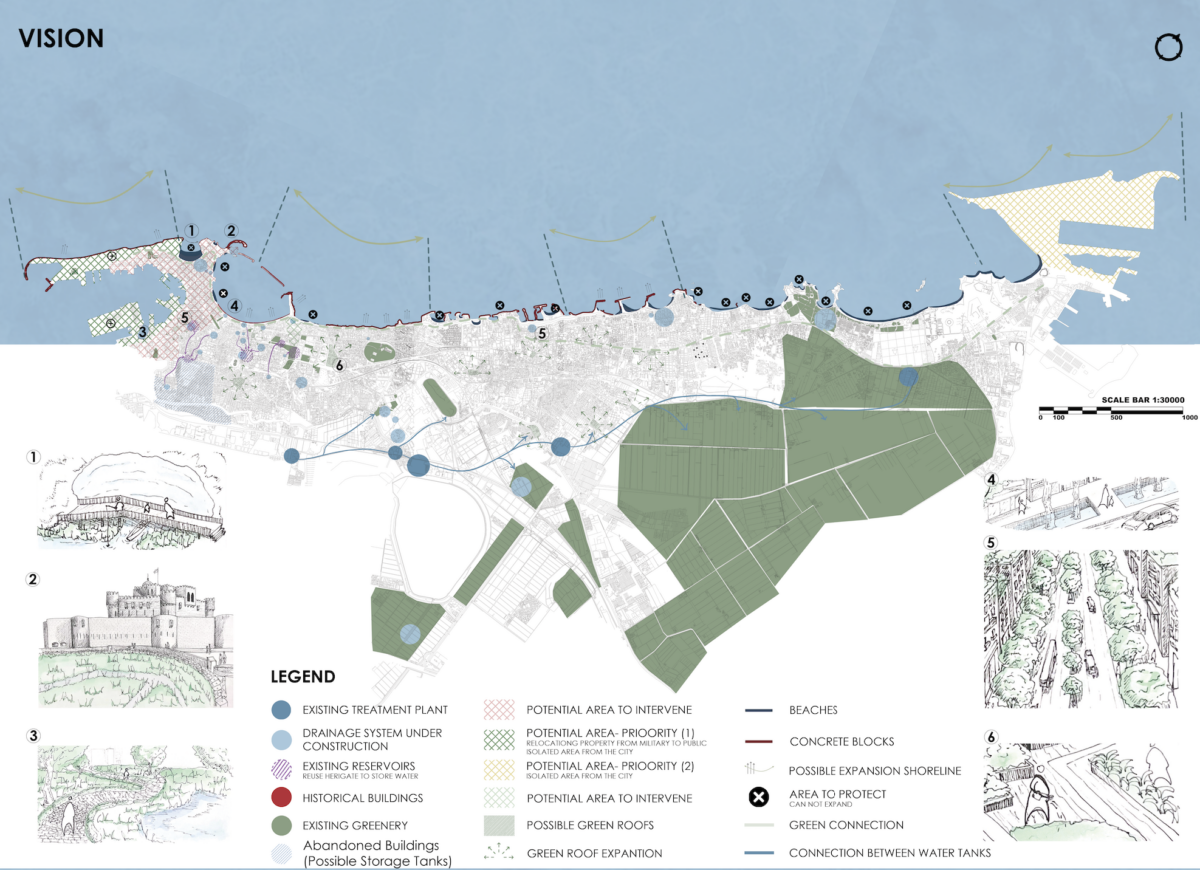 Strategy and vision for an adaptive Alexandria with focus on nature-based solution and green infrastructure (Credits: Sama Eslam, Sama Yehia, Sara Mounir)
Strategy and vision for an adaptive Alexandria with focus on nature-based solution and green infrastructure (Credits: Sama Eslam, Sama Yehia, Sara Mounir) -
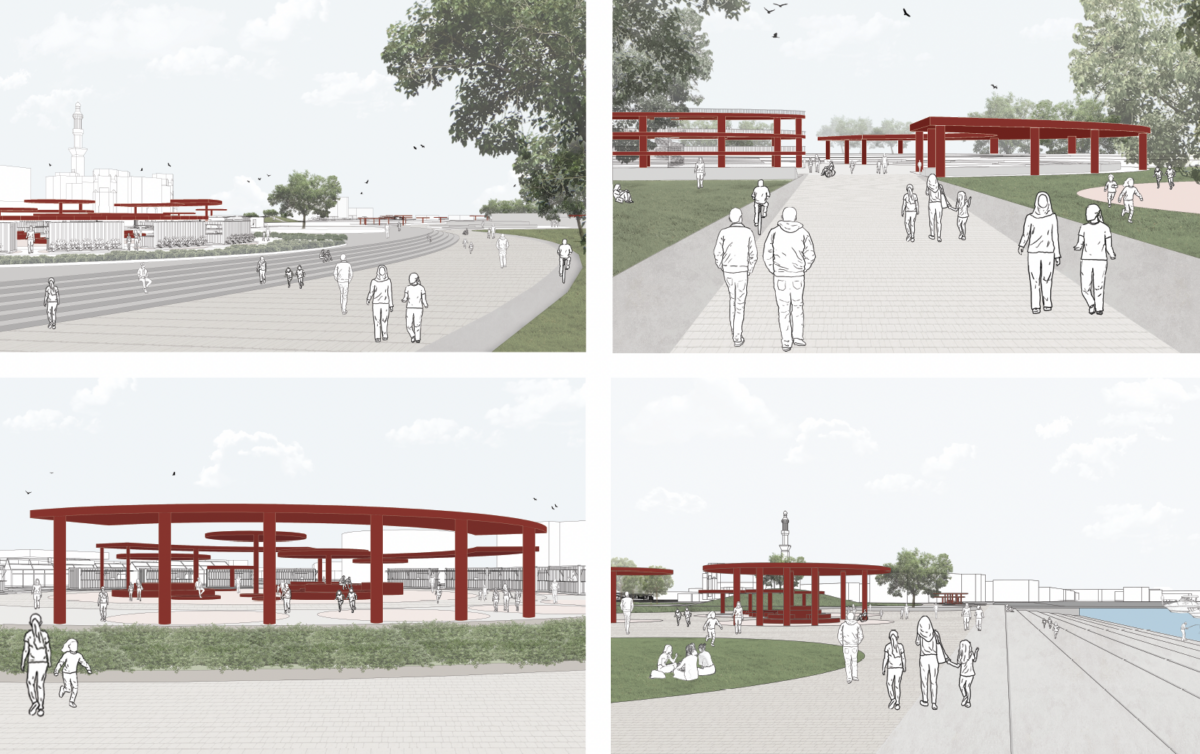 Climate-responsive park built over military base (Credits: Sama Eslam, Sama Yehia, Sara Mounir)
Climate-responsive park built over military base (Credits: Sama Eslam, Sama Yehia, Sara Mounir) -
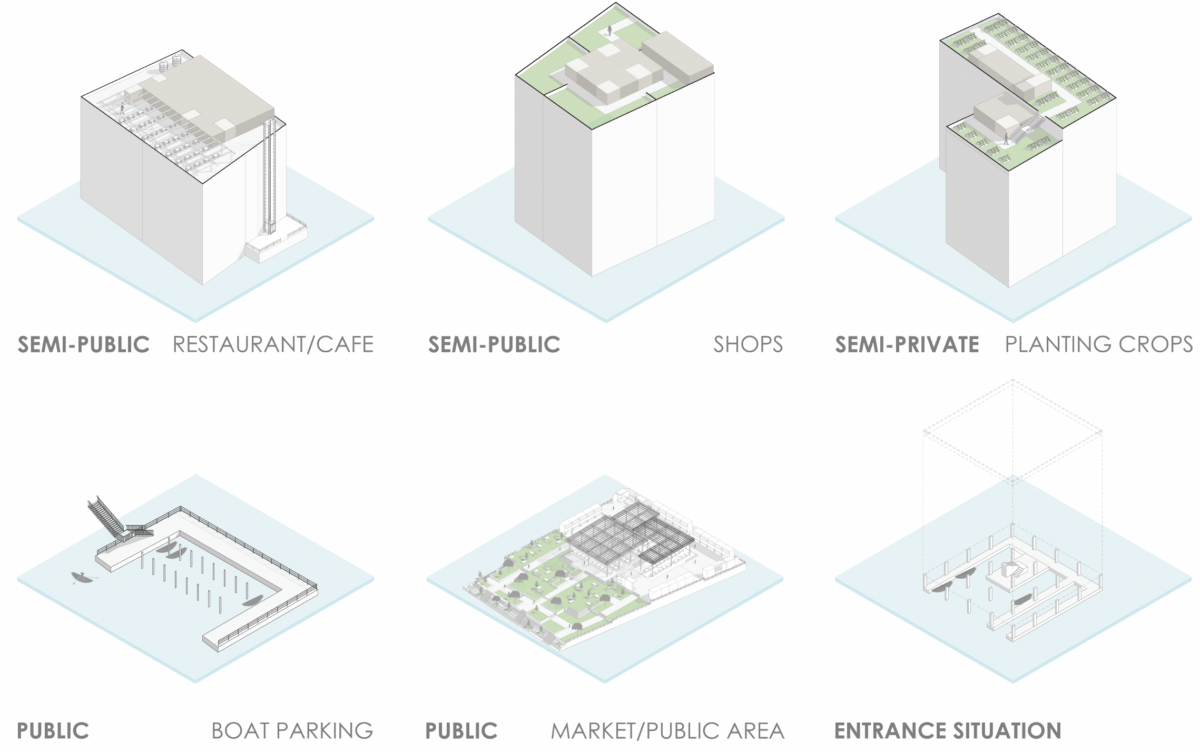 Rooftop typologies explored vis-a-vis levels of privacy and urban function (Credits: Ahmed Alaa & David Sherif)
Rooftop typologies explored vis-a-vis levels of privacy and urban function (Credits: Ahmed Alaa & David Sherif) -
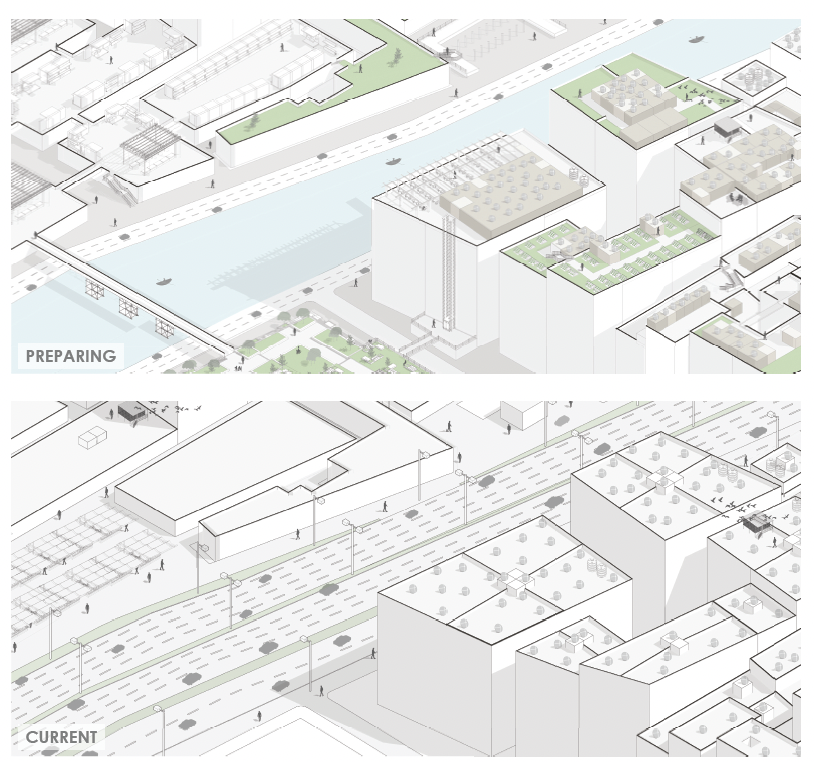 “From Floor Plans to Rooftops” seeks to rethink the ways in which rooftops can be utilised as new urban spaces for interaction and commute (Credits: Ahmed Alaa & David Sherif)
“From Floor Plans to Rooftops” seeks to rethink the ways in which rooftops can be utilised as new urban spaces for interaction and commute (Credits: Ahmed Alaa & David Sherif) -
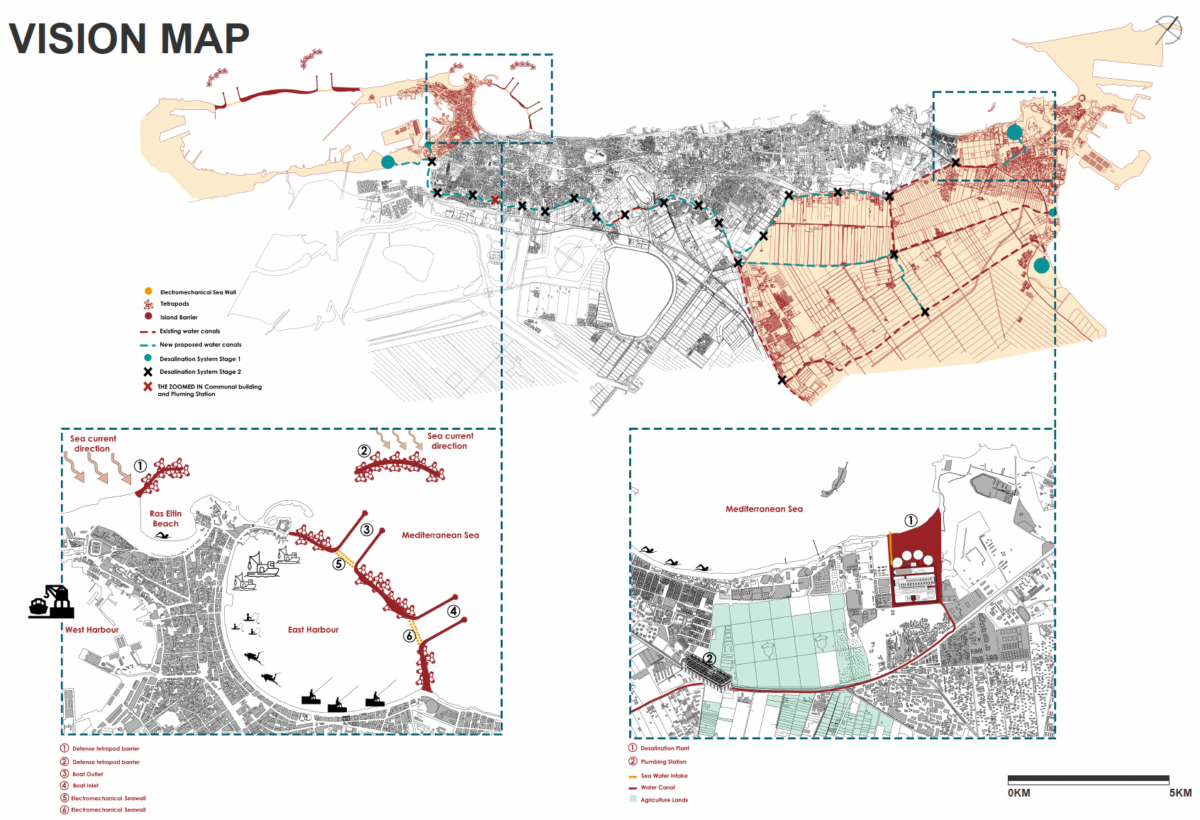 Developing a vision based on the topography of the city and its different urban infrastructures (Credits: Mariam Zakaria & Rawan Ramadan)
Developing a vision based on the topography of the city and its different urban infrastructures (Credits: Mariam Zakaria & Rawan Ramadan) -
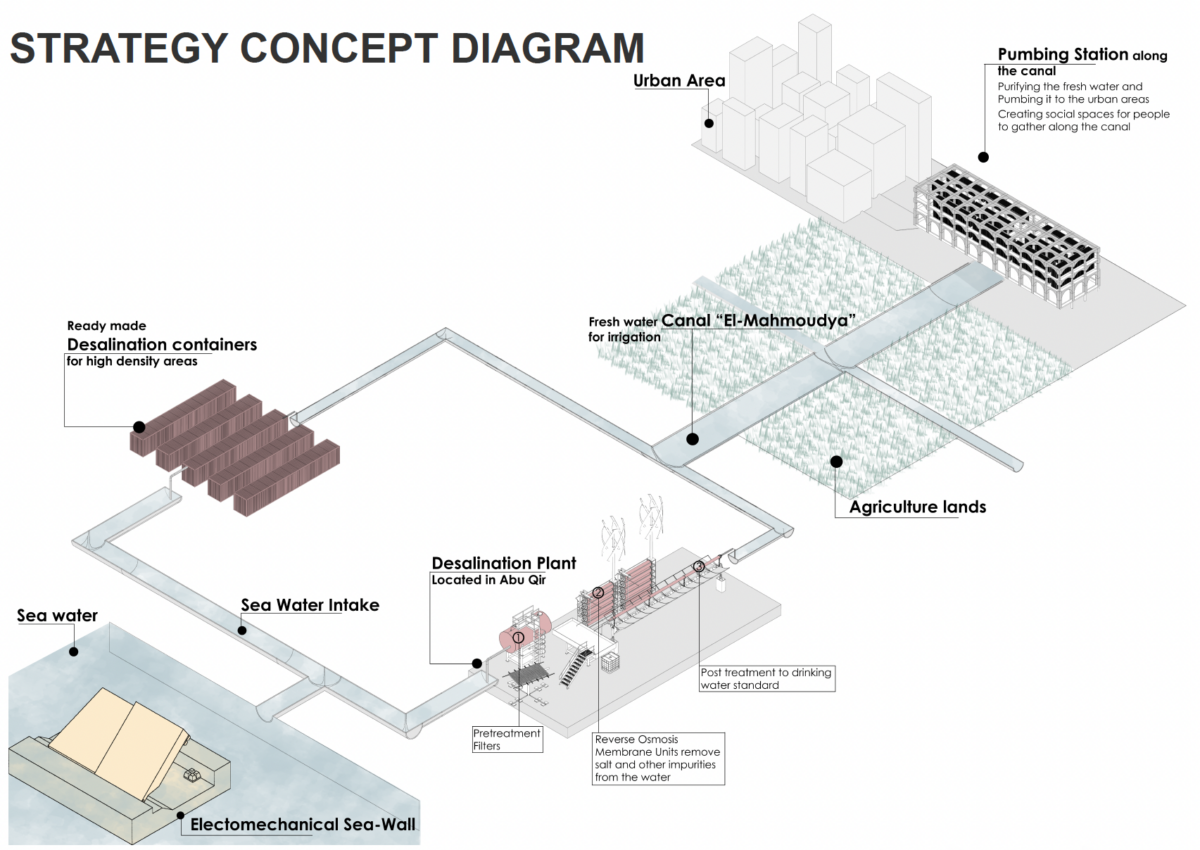 The adaptive strategy was based on activating the water canals and developing a water processing prototype based on the old cistern typology found in the city (Credits: Mariam Zakaria & Rawan Ramadan)
The adaptive strategy was based on activating the water canals and developing a water processing prototype based on the old cistern typology found in the city (Credits: Mariam Zakaria & Rawan Ramadan) -
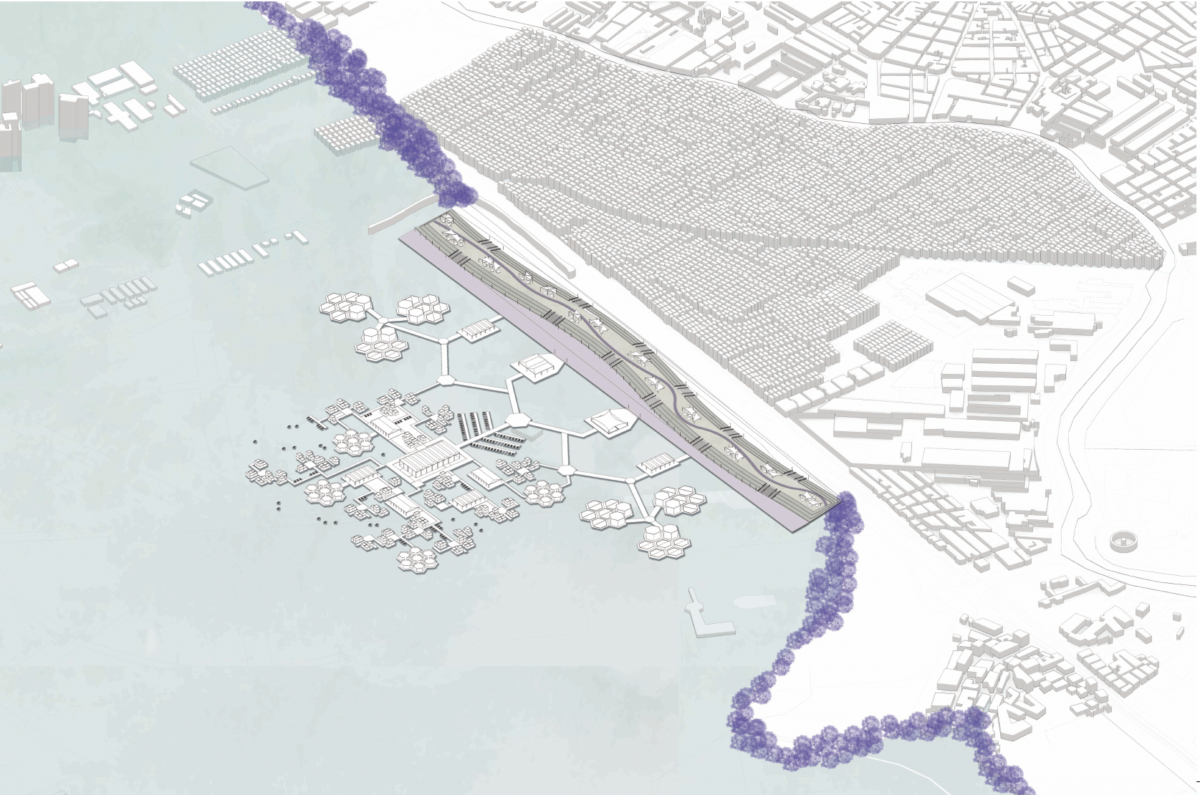 After exploring the different urban maps of Alexandria a new waterfront is designed as a floating city for fish farmers (Credits: Hana Ayman & Malak Yasser)
After exploring the different urban maps of Alexandria a new waterfront is designed as a floating city for fish farmers (Credits: Hana Ayman & Malak Yasser) -
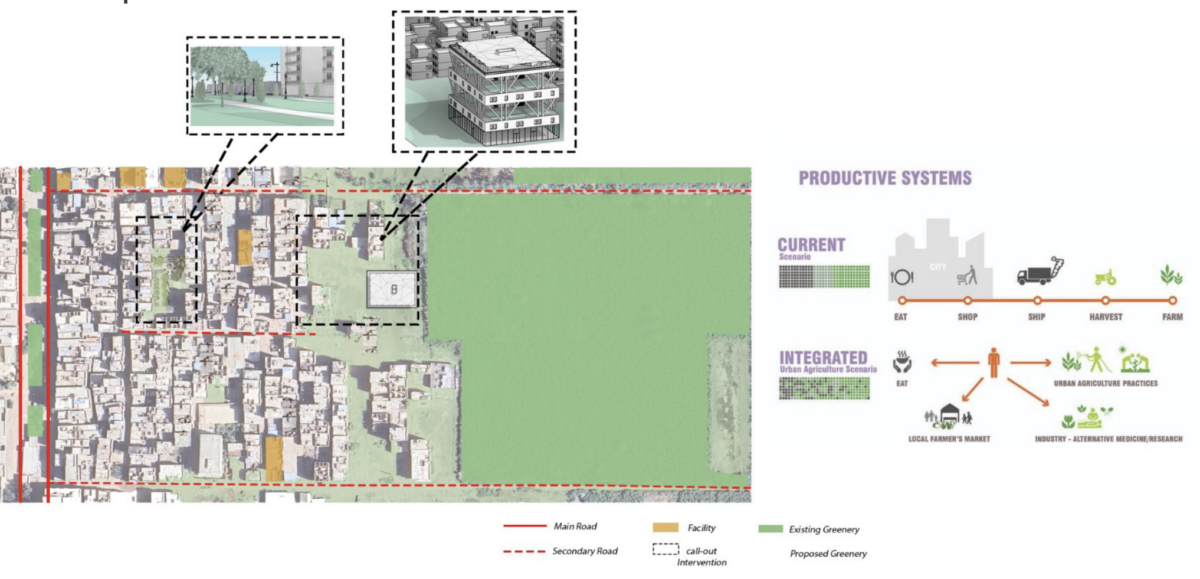 Based on research, some projects were developed to create possibilities for vulnerable communities in urban farming as their land will be submerged with water (Credits: Zeina Haitham & Nour Elkhatib)
Based on research, some projects were developed to create possibilities for vulnerable communities in urban farming as their land will be submerged with water (Credits: Zeina Haitham & Nour Elkhatib) -
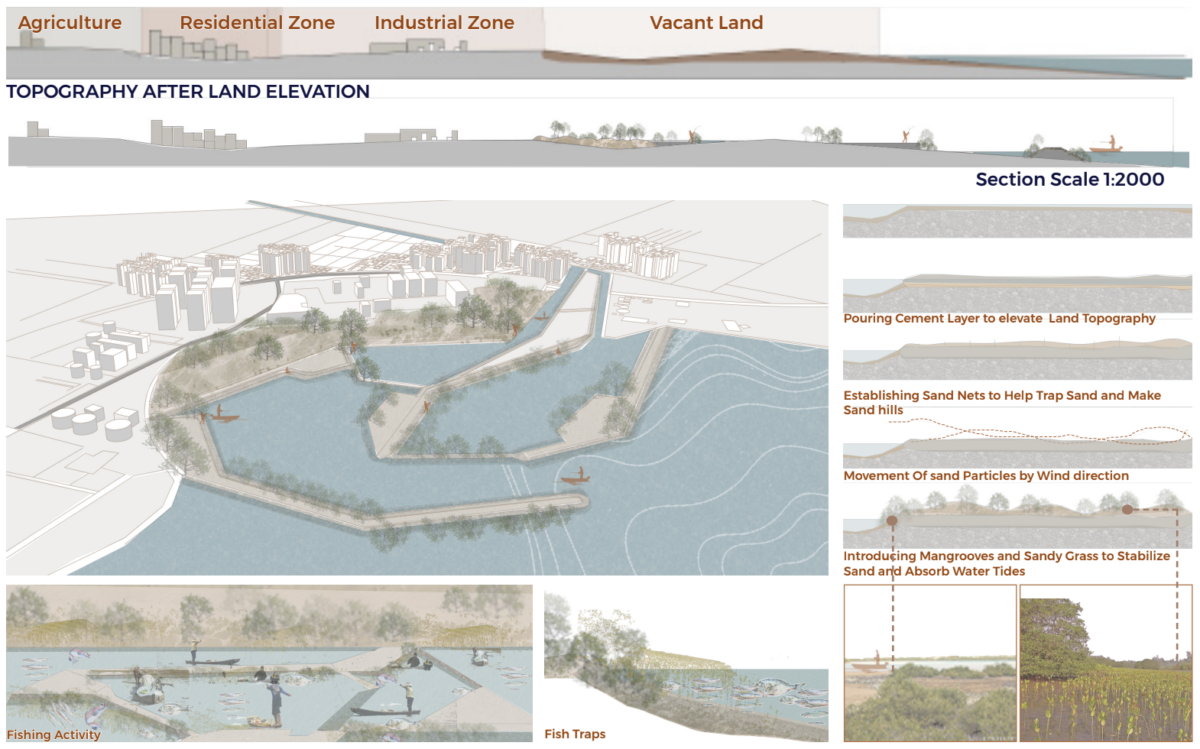 Utilising the different typologies and functions around the coastline to create new ecologies and landscapes that supports vulnerable communities in Alexandria (Credits: Hana Fouad & Yasmin Farag)
Utilising the different typologies and functions around the coastline to create new ecologies and landscapes that supports vulnerable communities in Alexandria (Credits: Hana Fouad & Yasmin Farag)